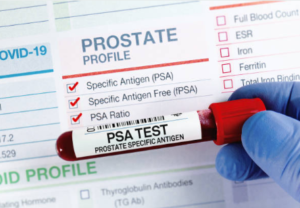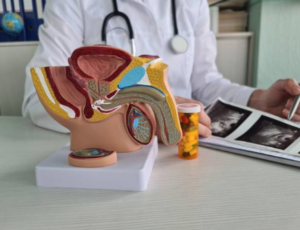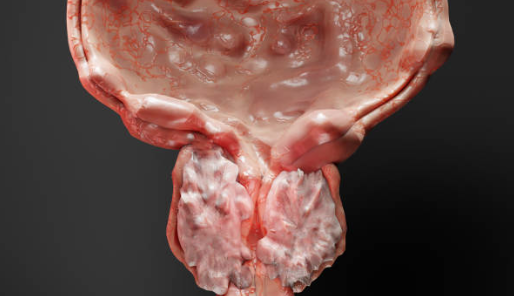Urgent Alert: Is Your Prostate Sabotaging Your Life? Discover BPH Warning Signs
Urgent Alert: Is Your Prostate Sabotaging Your Life? Discover BPH Warning Signs
Understanding Benign Prostatic Hypertrophy (BPH) – A Man’s Guide to Prostate Health
Hey there, guys. Are frequent bathroom trips, weak urine flow, and nighttime bathroom urges ruining your life? If that’s a resounding “yes,” you might be one of the millions of men over 40 dealing with benign prostatic hypertrophy (BPH). Don’t panic – BPH is a common, non-cancerous prostate enlargement. But left untreated, it can seriously mess with your quality of life. In this article, we’ll break down everything you need to know about BPH – from telltale signs to powerful treatments.
What Exactly is BPH (Benign Prostatic Hypertrophy)?
Think of your prostate as a walnut-sized gland that’s part of your reproductive system. It wraps around your urethra, the tube carrying urine out of your body. As you age, your prostate naturally grows. In BPH, this growth goes into overdrive, squeezing your urethra and causing frustrating urinary problems.
Explosive Warning Signs: Could You Have BPH?
Don’t ignore these red flags – they could indicate BPH:
- Constant Urge to Pee: Always feeling like you need to go, even when your bladder isn’t full.
- Weak Urine Flow: Dribbling, straining, and an unsatisfying feeling like your bladder isn’t fully empty.
- Stop-and-Start Urination: Trouble beginning to pee, or your stream stopping mid-flow.
- Nighttime Bathroom Battles: Waking up multiple times a night to go.
- Painful Urination or Ejaculation: Unusual discomfort when you pee or ejaculate.
 Relief Awaits: How is BPH Diagnosed?
Relief Awaits: How is BPH Diagnosed?
Getting a BPH diagnosis might sound scary, but it’s the first step to finding relief. Here’s a breakdown of what typically happens:
-
1. Medical History & Symptom Check: This is where you become the expert! Your doctor wants to know all about your bathroom woes: how often you go, how strong or weak your flow is, any nighttime trips, pain, etc. Be specific and honest – even the embarrassing stuff matters! They may also ask about your overall health and any medications you take.
-
2. Digital Rectal Exam (DRE): I know, this one isn’t anyone’s favorite. But bear with me! During a DRE, your doctor will insert a gloved, lubricated finger into your rectum for a few seconds to feel the back of your prostate. It might feel a bit odd, but it’s usually not painful. This exam helps your doctor estimate the size of your prostate and check for any bumps or hard areas that need further investigation.
-
3. PSA Blood Test: This is a simple blood draw to measure your prostate-specific antigen (PSA) levels. While a high PSA can mean BPH, it could also indicate other prostate problems, including prostate cancer. That’s why it’s just one piece of the puzzle.
-
4. Further Tests (if needed): Depending on your specific case, your doctor might suggest additional tests to get a clearer picture. These could include:
- Urine flow study: A painless test where you pee into a special device that measures the strength and amount of your urine flow.
- Post-void residual (PVR) measurement: This checks how much urine is left in your bladder after you pee, helping to see if it’s emptying fully.
- Imaging tests: Ultrasound or MRI scans might be used to visualize your prostate and surrounding structures.
If you get that BPH diagnosis, don’t despair. Your doctor will tailor a treatment plan for your unique needs. Here’s a glimpse into those options:
Watchful Waiting: The Low-Key Approach
For mild BPH, your doc might recommend monitoring it with regular checkups. This often works if your symptoms aren’t too bothersome. You’ll also get lifestyle change tips to manage those symptoms.
What is Watchful Waiting?
- It’s a management strategy for mild BPH where you and your doctor actively monitor your condition, but hold off on medication or procedures – unless things worsen.
- It doesn’t mean ignoring the problem! Regular checkups with your doctor are crucial to track changes in your prostate size and any worsening symptoms.
When is Watchful Waiting a Good Option?
Your doctor might consider it if:
- Symptoms are Mild: Your bathroom troubles are annoying, but not seriously impacting your daily life.
- Overall Health: You’re in good general health, and there are no other pressing prostate concerns.
- You’re Willing to Commit: You’re ready to embrace lifestyle changes to help manage your BPH and attend those regular doctor appointments.
Lifestyle Changes for BPH Management
While on watchful waiting, your doctor will likely suggest lifestyle adjustments like:
- Modifying Fluid Intake: Especially avoiding excessive fluids before bed to minimize nighttime bathroom trips.
- Bladder-Friendly Habits: Trying timed urination (going at regular intervals) and “double voiding” (trying to pee again a few minutes after you go).
- Diet Changes: Avoiding spicy food, caffeine, and alcohol, as they can irritate your bladder and worsen symptoms.
- Pelvic Floor Exercises: Strengthening the muscles that support your bladder can sometimes help.
- Managing Other Health Conditions: Conditions like diabetes and high blood pressure can worsen BPH symptoms, so getting them under control is key.
Pros and Cons of Watchful Waiting
Pros:
- Avoids potential medication side effects.
- Less invasive than other treatment options.
- Can be effective for mild symptoms.
Cons:
- Symptoms might gradually worsen over time.
- Requires commitment to lifestyle changes.
- Risk of BPH complications if left untreated for too long.
Important: Watchful waiting is not a “forever” solution. If your symptoms become more bothersome or complications develop, your doctor will discuss other treatment options with you.
 Triumph Over BPH: Benign Prostatic Hyperplasia Medication List
Triumph Over BPH: Benign Prostatic Hyperplasia Medication List
When your prostate antics demand serious action, these meds might be your superheroes:
- Alpha-Blockers: Relax bladder and prostate muscles for sweet peeing relief.
- 5-Alpha Reductase Inhibitors: Shrink that enlarged prostate over time.
- Combination Therapy: Sometimes, a tag-team of meds is the way to go.
When Meds Fall Short: Minimally Invasive BPH Procedures
If drugs aren’t cutting it, there are high-tech options using heat energy or lasers to clear out excess prostate tissue.
BPH First Line Treatment: It Depends on You
There’s no single “best” first-line BPH treatment. It all boils down to your individual symptoms, health, and preferences.
BPH and PSA: What’s the Connection?
PSA (prostate-specific antigen) is a protein your prostate makes. An enlarged prostate, like in BPH, can bump up your PSA levels. That’s why a PSA test is often part of your BPH workup. But remember, an elevated PSA doesn’t always mean BPH or prostate cancer. Further evaluation is key.
Let’s dig deeper into the relationship between BPH, PSA, and why it can sometimes create confusion:
BPH and PSA: The Link
- PSA (prostate-specific antigen) is a protein made primarily by your prostate gland.
- Think of PSA as a “leakage” from your prostate into your bloodstream. Normally, only small amounts leak out.
- When your prostate is enlarged (like in BPH), or with other prostate problems, more PSA tends to escape, raising the level in your blood.
- That’s why your doctor often orders a PSA test if they suspect BPH – it offers a clue about what might be going on with your prostate.
Why an Elevated PSA Gets Complicated
Here’s where things get tricky:
- Not Just BPH: Several conditions can increase your PSA, including prostate cancer and prostatitis (prostate inflammation).
- No Perfect Cutoff: There’s no single PSA number that screams “BPH!” or “prostate cancer!”. Different levels mean different things depending on your age, overall health, and other factors.
- Individual Variations: Some men naturally have higher PSA levels than others without having prostate issues.
Getting to the Bottom of It: The Importance of Further Evaluation
An elevated PSA is like a flashing yellow light – it signals that something needs attention, but not necessarily a dire emergency. Your doctor will likely recommend further tests to determine the cause, such as:
- Additional prostate cancer screening (especially if you have risk factors)
- Ultrasound or other imaging to get a visual of your prostate
- Tests to rule out prostatitis or other infections
The Takeaway
- PSA is a valuable tool, but it’s just one piece of the puzzle when it comes to prostate health.
- Don’t panic over a high PSA result. Work with your doctor to understand what it means for you.
- Further tests will help clarify the picture and guide the best treatment approach.
 FAQs: Your Burning BPH Questions Answered
FAQs: Your Burning BPH Questions Answered
1. I have some of those BPH symptoms… does that automatically mean I have it?
Not necessarily. While those symptoms are strong BPH indicators, other conditions can cause similar issues. It’s essential to see your doctor for a proper diagnosis to rule out any other potential problems.
2. What’s the deal with that digital rectal exam (DRE)? Is it really necessary?
While a DRE might not be the highlight of your doctor’s visit, it’s a quick and valuable tool. It helps your doctor assess the size and feel of your prostate, giving them important clues about your condition.
3. Can I manage BPH without medication?
Possibly! For mild cases, lifestyle changes like limiting fluids before bed, avoiding bladder irritants (like caffeine and alcohol), and doing pelvic floor exercises can sometimes provide enough relief. Your doctor will help you decide if this approach is right for you.
4. Are those BPH medications safe long-term?
Like any medication, BPH drugs can have potential side effects. It’s important to have an open discussion with your doctor about the risks and benefits, and to monitor for any issues as you take the medication.
5. My PSA level is high. Does this mean I have prostate cancer?
An elevated PSA can signal prostate problems, but it doesn’t guarantee a cancer diagnosis. BPH and other non-cancerous conditions can also cause high PSA. Your doctor will likely recommend further tests to determine the cause.
Disclaimer:
The information provided in this article is intended for general knowledge and informational purposes only, and does not constitute medical advice. It is essential to consult a qualified healthcare professional for diagnosis and treatment of any health condition. Never disregard professional medical advice or delay in seeking it because of something you have read in this article.


